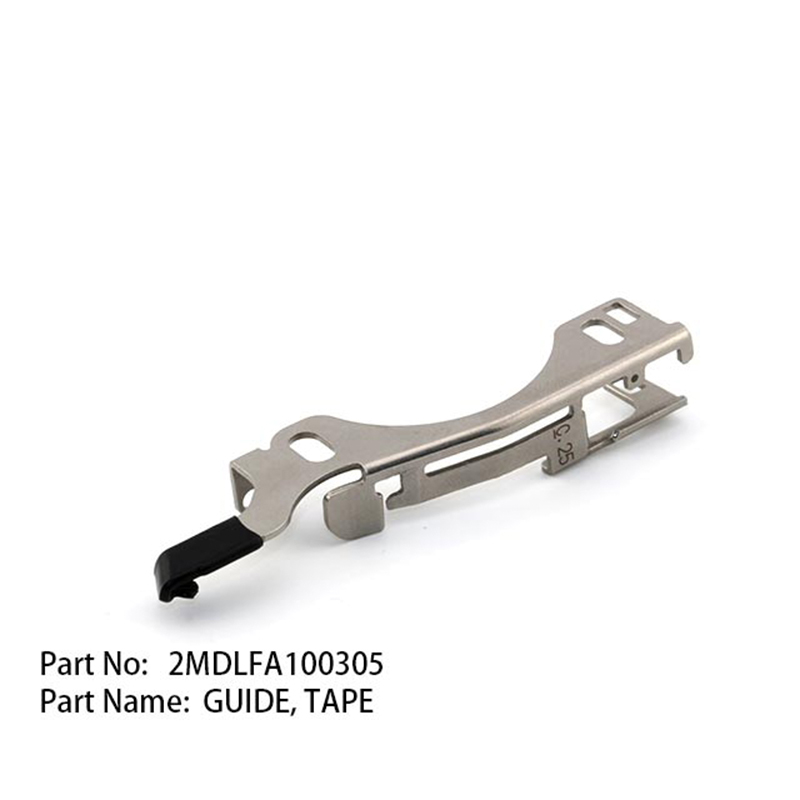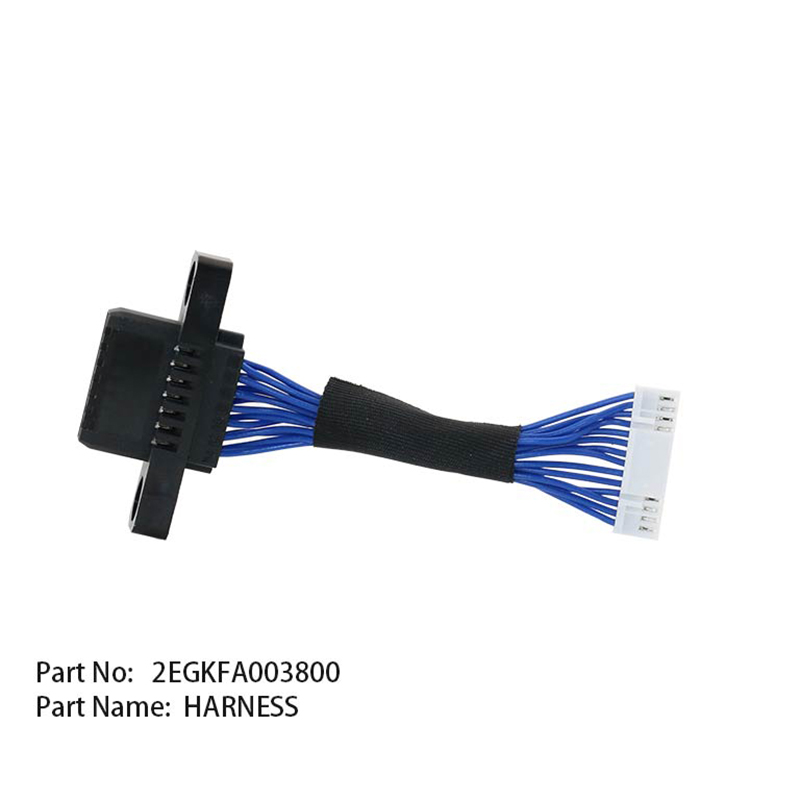Do feeders support seamless compatibility with multiple brands of placement machines?
Release Time : 2025-10-23
In modern electronics manufacturing, the efficient operation of SMT (surface mount technology) production lines relies heavily on the coordinated operation of various equipment components. As a key component of placement machines, feeders are crucial for ensuring stable and precise delivery of components to the nozzles. With the increasing diversification of product offerings and the rapid upgrading of equipment, production lines often incorporate multiple brands and models of placement machines. In this context, whether feeders support seamless compatibility with multiple brands of placement machines has become a crucial factor influencing production flexibility, reducing procurement costs, and improving equipment utilization.
Traditionally, many feeders are provided by the placement machine manufacturer, using proprietary interfaces and fixed specifications, designed to work only with machines of the same brand or even specific model. While this closed-loop matching model ensures initial compatibility, it also presents numerous limitations: Companies must purchase new feeders for each new brand of placement machine; When older equipment is replaced, existing feeders are difficult to migrate; and flexibly allocating resources between different production lines results in idle equipment and duplicated investment. Especially for contract manufacturers or manufacturers with frequent product upgrades, this "one-to-one" binding model severely restricts production flexibility and responsiveness.
Feeders with multi-brand compatibility, however, break this barrier. These feeders are designed with full consideration of the mounting interfaces, track dimensions, drive methods, and electrical signal standards of mainstream placement machines. Through a modular structure and adjustable mechanisms, they achieve both physical and functional compatibility with equipment from different brands. Whether it's track width, feed height, locking method, or signal connection, installation is quick and easy through minor adjustments or replacement of adapter modules, ensuring the feeder operates stably on different machine models, just like genuine parts.
This compatibility extends beyond physical connectivity to deeper functional synergy. High-quality universal feeders accurately respond to control commands from different placement machines, enabling synchronized coordination of feed stepping, speed adjustment, status feedback, and other actions. Some high-end models also support intelligent recognition and parameter adaptation, reducing manual setup errors and ensuring consistent feeding accuracy and stability across different machines. This "one device, multiple uses" capability significantly increases companies' flexibility in equipment management.
From a production management perspective, multi-brand compatible feeders significantly enhance the reconfigurability of production lines. When a line requires emergency support or equipment maintenance, the feeder can be quickly removed and transferred to another placement machine for continued use, avoiding downtime due to parts shortages. During the new product introduction phase, companies can flexibly adjust feeder resources based on pilot production needs, eliminating the need to wait for factory customization and shortening lead times. Furthermore, sourcing universal feeders reduces spare parts inventory, reduces capital investment, and improves supply chain management efficiency.
Furthermore, the compatible design provides a smooth transition path for equipment upgrades. When phasing out older models or introducing newer brands, existing feeders can continue to be used, avoiding the waste of one-time scrapping. This sustainable usage model not only reduces overall operating costs but also aligns with the development of green manufacturing.
More importantly, multi-brand compatibility does not mean compromising performance. Through precision machining, high-quality materials, and rigorous testing, professional manufacturers ensure that universal feeders meet or even exceed OEM standards in feeding accuracy, operational stability, and service life. Their stable performance eliminates the need for companies to compromise between compatibility and reliability.
In summary, feeders that seamlessly support multi-brand placement machines are becoming a key enabler for the intelligent and flexible development of SMT production lines. Their open design breaks down equipment silos, unleashing resource potential and enabling companies to achieve greater adaptability and competitiveness in the face of complex and ever-changing production demands. In today's pursuit of efficient, flexible, and cost-effective manufacturing, such feeders are not just tools but also strategic options for improving overall production efficiency.
Traditionally, many feeders are provided by the placement machine manufacturer, using proprietary interfaces and fixed specifications, designed to work only with machines of the same brand or even specific model. While this closed-loop matching model ensures initial compatibility, it also presents numerous limitations: Companies must purchase new feeders for each new brand of placement machine; When older equipment is replaced, existing feeders are difficult to migrate; and flexibly allocating resources between different production lines results in idle equipment and duplicated investment. Especially for contract manufacturers or manufacturers with frequent product upgrades, this "one-to-one" binding model severely restricts production flexibility and responsiveness.
Feeders with multi-brand compatibility, however, break this barrier. These feeders are designed with full consideration of the mounting interfaces, track dimensions, drive methods, and electrical signal standards of mainstream placement machines. Through a modular structure and adjustable mechanisms, they achieve both physical and functional compatibility with equipment from different brands. Whether it's track width, feed height, locking method, or signal connection, installation is quick and easy through minor adjustments or replacement of adapter modules, ensuring the feeder operates stably on different machine models, just like genuine parts.
This compatibility extends beyond physical connectivity to deeper functional synergy. High-quality universal feeders accurately respond to control commands from different placement machines, enabling synchronized coordination of feed stepping, speed adjustment, status feedback, and other actions. Some high-end models also support intelligent recognition and parameter adaptation, reducing manual setup errors and ensuring consistent feeding accuracy and stability across different machines. This "one device, multiple uses" capability significantly increases companies' flexibility in equipment management.
From a production management perspective, multi-brand compatible feeders significantly enhance the reconfigurability of production lines. When a line requires emergency support or equipment maintenance, the feeder can be quickly removed and transferred to another placement machine for continued use, avoiding downtime due to parts shortages. During the new product introduction phase, companies can flexibly adjust feeder resources based on pilot production needs, eliminating the need to wait for factory customization and shortening lead times. Furthermore, sourcing universal feeders reduces spare parts inventory, reduces capital investment, and improves supply chain management efficiency.
Furthermore, the compatible design provides a smooth transition path for equipment upgrades. When phasing out older models or introducing newer brands, existing feeders can continue to be used, avoiding the waste of one-time scrapping. This sustainable usage model not only reduces overall operating costs but also aligns with the development of green manufacturing.
More importantly, multi-brand compatibility does not mean compromising performance. Through precision machining, high-quality materials, and rigorous testing, professional manufacturers ensure that universal feeders meet or even exceed OEM standards in feeding accuracy, operational stability, and service life. Their stable performance eliminates the need for companies to compromise between compatibility and reliability.
In summary, feeders that seamlessly support multi-brand placement machines are becoming a key enabler for the intelligent and flexible development of SMT production lines. Their open design breaks down equipment silos, unleashing resource potential and enabling companies to achieve greater adaptability and competitiveness in the face of complex and ever-changing production demands. In today's pursuit of efficient, flexible, and cost-effective manufacturing, such feeders are not just tools but also strategic options for improving overall production efficiency.







